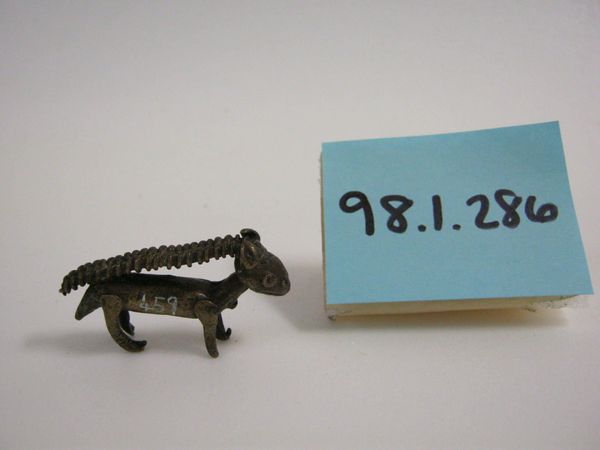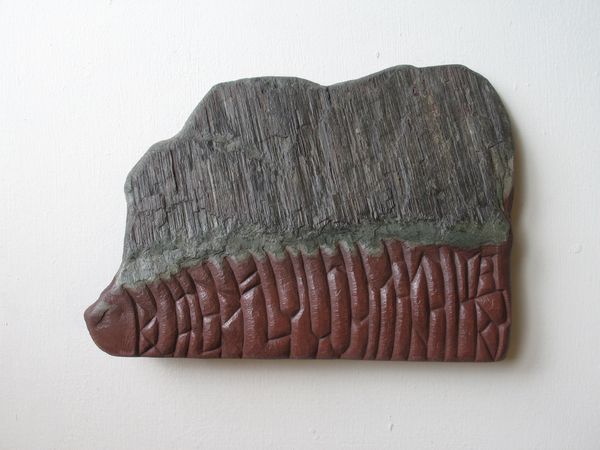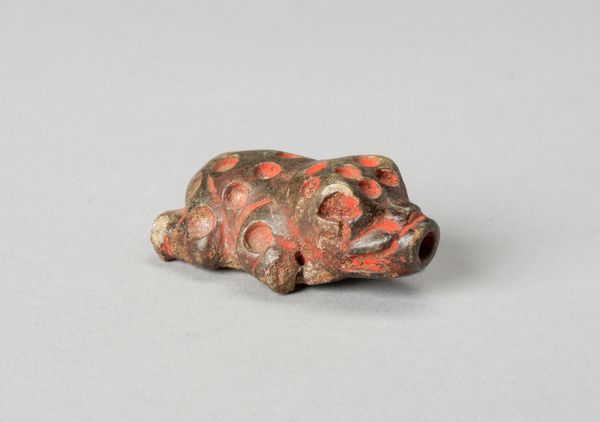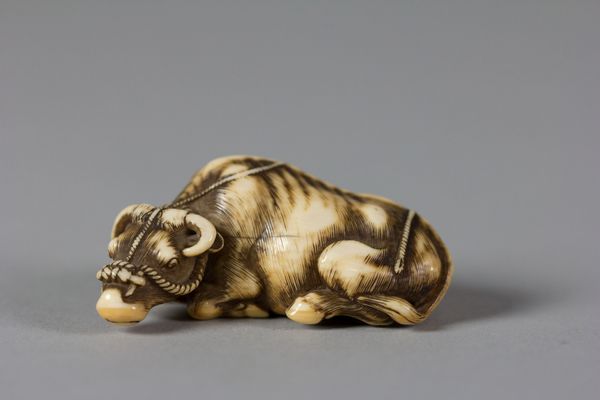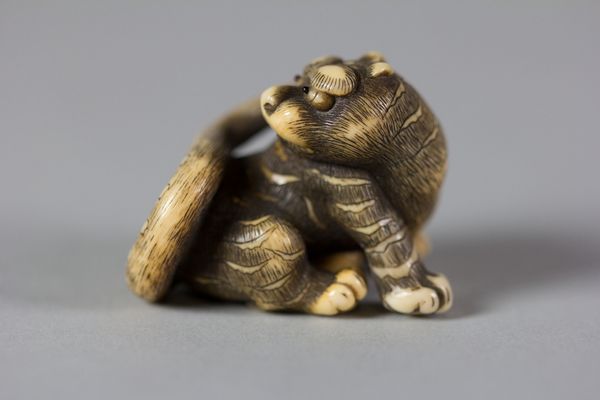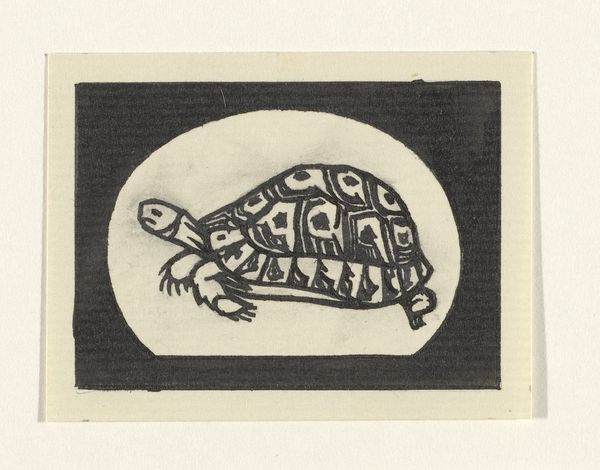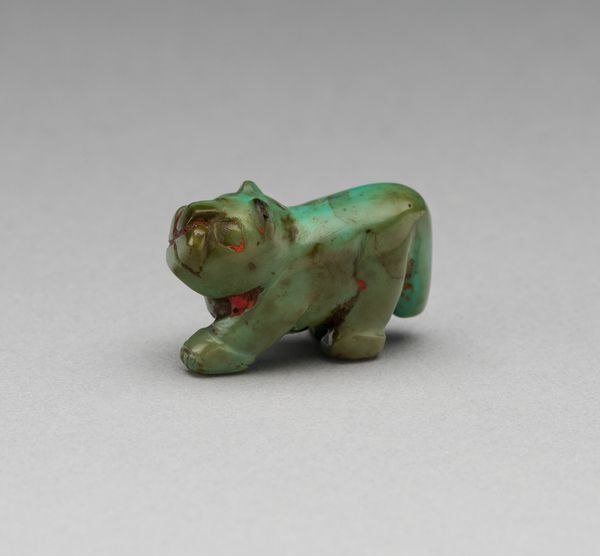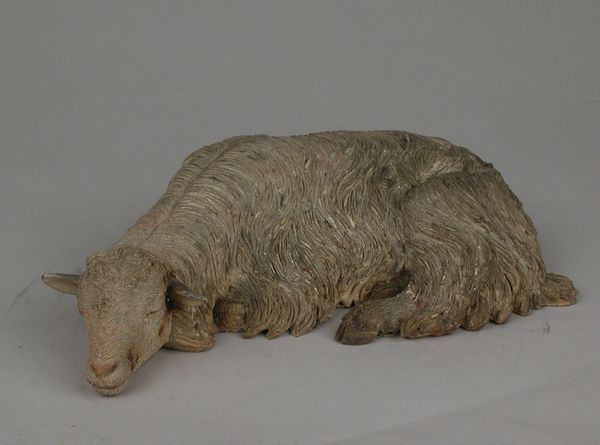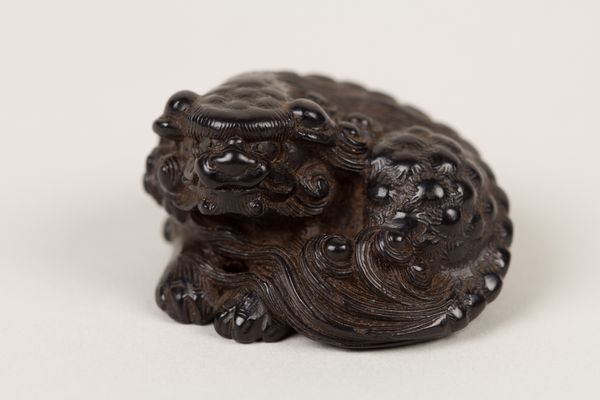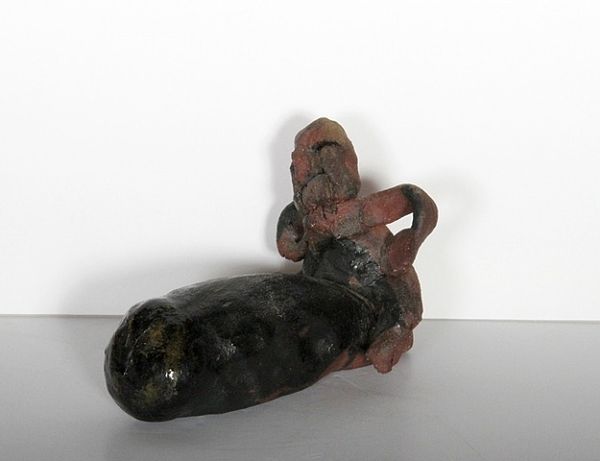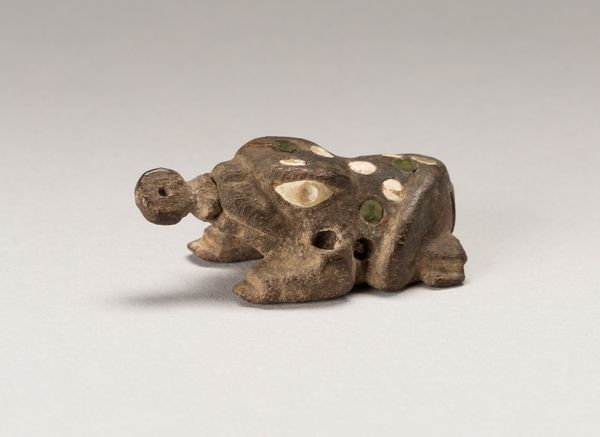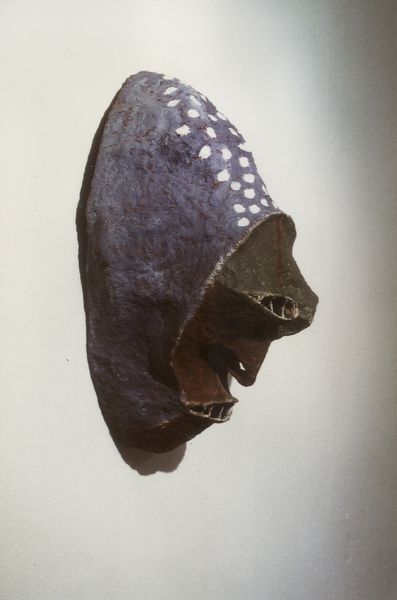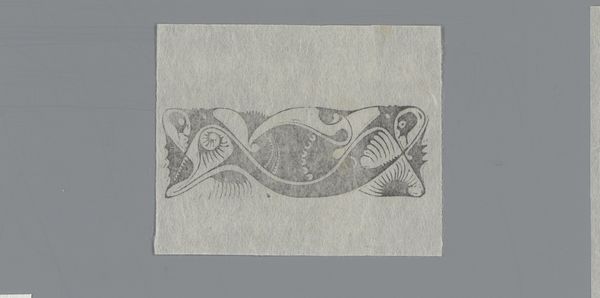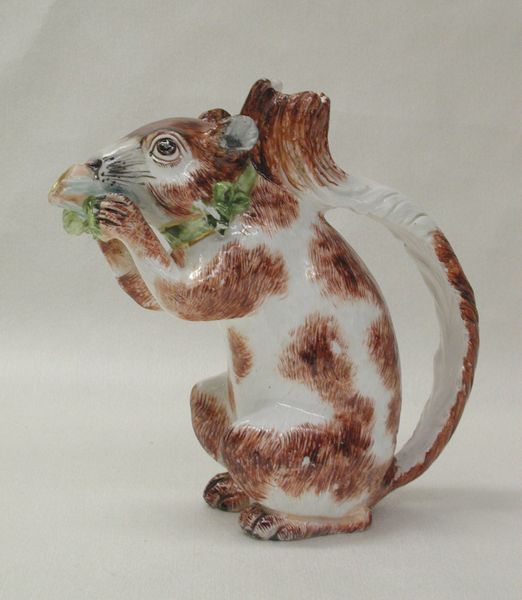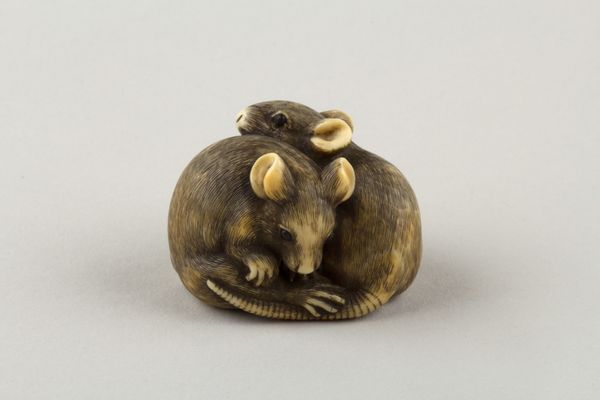![Goldweight [Porcupine] by Akan](/_next/image?url=https%3A%2F%2Fd2w8kbdekdi1gv.cloudfront.net%2FeyJidWNrZXQiOiAiYXJ0ZXJhLWltYWdlcy1idWNrZXQiLCAia2V5IjogImFydHdvcmtzLzU4MzAzYmU0LTRhNjEtNDBjYy1hNjQyLTg3YzI0MWM3MWM1OS81ODMwM2JlNC00YTYxLTQwY2MtYTY0Mi04N2MyNDFjNzFjNTlfZnVsbC5qcGciLCAiZWRpdHMiOiB7InJlc2l6ZSI6IHsid2lkdGgiOiAxOTIwLCAiaGVpZ2h0IjogMTkyMCwgImZpdCI6ICJpbnNpZGUifX19&w=3840&q=75)
brass, gold, sculpture
brass
gold
figuration
sculpture
Dimensions: 1 x 7/8 x 2 in. (2.54 x 2.22 x 5.08 cm)
Copyright: Public Domain
Curator: Welcome. We are standing before a captivating piece: an Akan goldweight in the form of a porcupine, crafted sometime in the 19th or 20th century. It’s a diminutive sculpture, made of brass and gold. Editor: My first impression? I feel a quiet defiance emanating from this small sculpture. It’s earthy, humble, yet carries a silent strength. It feels emblematic of resilience. Curator: Indeed. The craftsmanship is noteworthy; observe the carefully incised details of the porcupine's quills. It adheres to certain principles of formalism, emphasizing compact lines and careful proportioning within a defined structure. It's both stylized and quite literal. Editor: But beyond its aesthetic construction, let's consider the context. Goldweights weren’t merely decorative objects; they were integral to trade and social interactions among the Akan people. The porcupine, in particular, embodies values of self-sufficiency and defense. It's a powerful statement on economic autonomy and protection against colonial exploitation. Curator: True, and in semiotic terms, the porcupine is the signifier and its various attributes its signifieds. In Akan culture the form and image becomes an indexical marker referencing both trade practices and proverbial meaning. This adds multiple layers to this objet d'art. Editor: Absolutely. And considering that these weights were used in economic transactions, their symbolism extended to moral considerations as well, ethical transactions. The weight also challenges gender assumptions that trade, economics and power in Western culture have only been accessible to men. Curator: Well-argued, as these miniature brass artworks illustrate the complex interplay between trade, status, and representation. The artist balances functionality with symbolic content—effectively merging design and significance. Editor: Right. For me, it is a potent symbol reflecting complex intersections: wealth, security, gender and agency within pre-colonial African societies resisting forces. Curator: On close reflection, I’d say it shows how design is integral to communication, where visual forms signify cultural and historical realities. It’s a potent study in the semiotics of everyday life. Editor: Ultimately, this artwork calls us to rethink power structures embedded even within our daily economic systems.
Comments
No comments
Be the first to comment and join the conversation on the ultimate creative platform.
